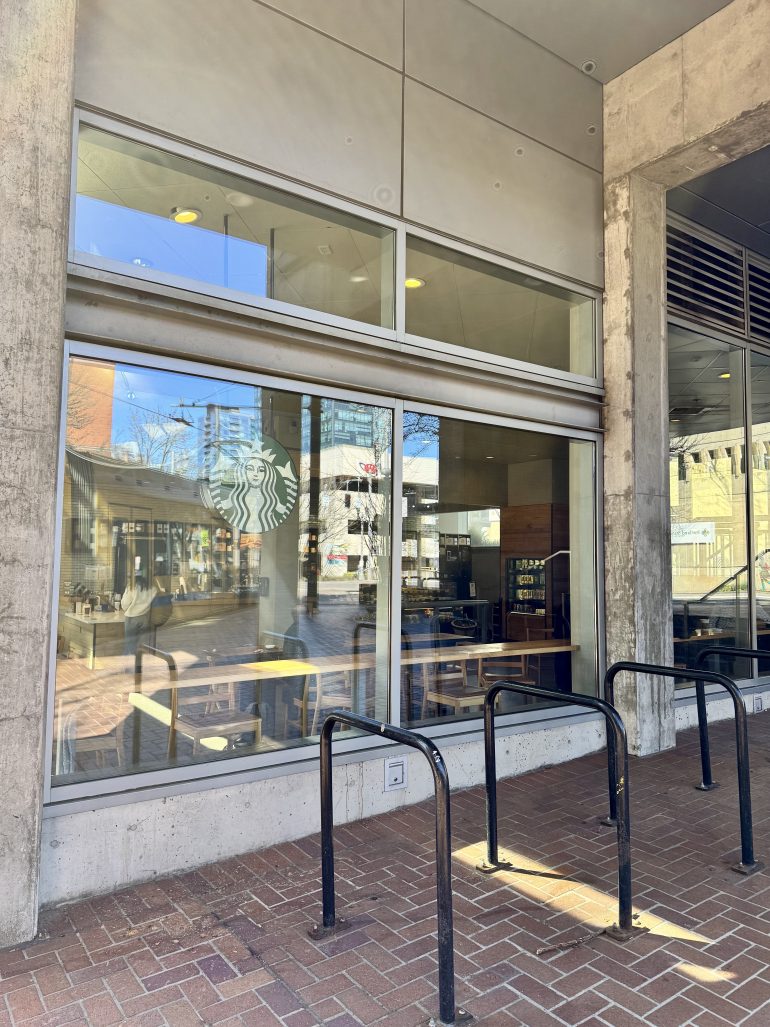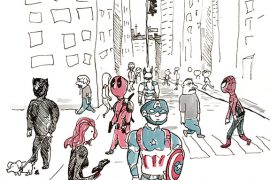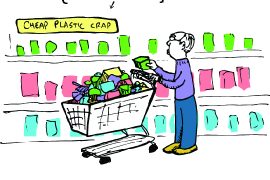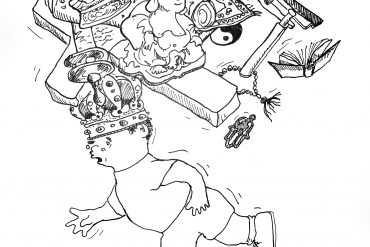One of my earliest jobs was working at a Starbucks in Lake Oswego in 2019. It was a great experience, and I think that everyone should at least work once in a retail or hospitality setting. It teaches you many life skills. But while working there, I learned I wasn’t fast enough. Especially when it came to Frappuccinos, anything that required extra steps, I was taking my time. The worst thing was to look back and see a line of cups sitting there waiting to be filled. Recently, I had some weird experiences at Starbucks – underwhelming, and sort of decaffeinated.
I had just gotten out of class and decided to stop by Starbucks to work on a project. I found a seat, opened my laptop, and started working. Not even five minutes later, a barista walked up to me and said there was a new policy—customers had to buy something if they wanted to stay.
Wait… what?
And then I noticed another employee, in a green apron, talking to a homeless man sitting nearby. A few words were exchanged, and just like that, he was asked to leave.
It caught me off guard. Starbucks has always felt like one of those third places where you could just exist—students preparing for their classes, freelancers typing away, friends chatting for hours. But now? It felt different, like the space came with an unspoken price tag.
I get it—businesses need paying customers, but where do we draw the line between keeping a store running and making people feel unwelcome? And more importantly, who gets to stay, and who gets shown the door.
Meanwhile, the corporation spent over half a billion dollars ($507.8 million, according to Statista) on advertising last year. That’s an increase from $416.7 million (according to Statista) the year before. Their recent Super Bowl ad, “Hello Again,” played AC/DC’s “Thunderstruck” while baristas prepared drinks, wrote names, and notes on cups. Nostalgic? Sure. But it’s also a little ironic, given that the personal touch was taken away as Starbucks increased automation.
In a recent interview with The Wall Street Journal, new CEO Brian Niccol stated that writing on cups will return, as will amenities such as condiment bars and free refills for all customers. It’s part of an attempt to bring back the old-school “community coffeehouse” vibe.
Here’s the thing: you can’t advertise your way into authenticity. If the in-store experience starts feeling more like a gated lounge than a welcoming space, no amount of AC/DC or clever cup messages is going to change that.
Because when the message says “welcome,” but the vibe says “buy something or leave,” people notice.
According to the article titled “Starbucks baristas call 5-day strike. Here’s what to expect in Seattle” in the 2024 December Seattle Times report, Baristas in some of Starbucks’ busiest cities – Chicago, Los Angeles, and Seattle – walked off the job and stayed out through Christmas Eve.
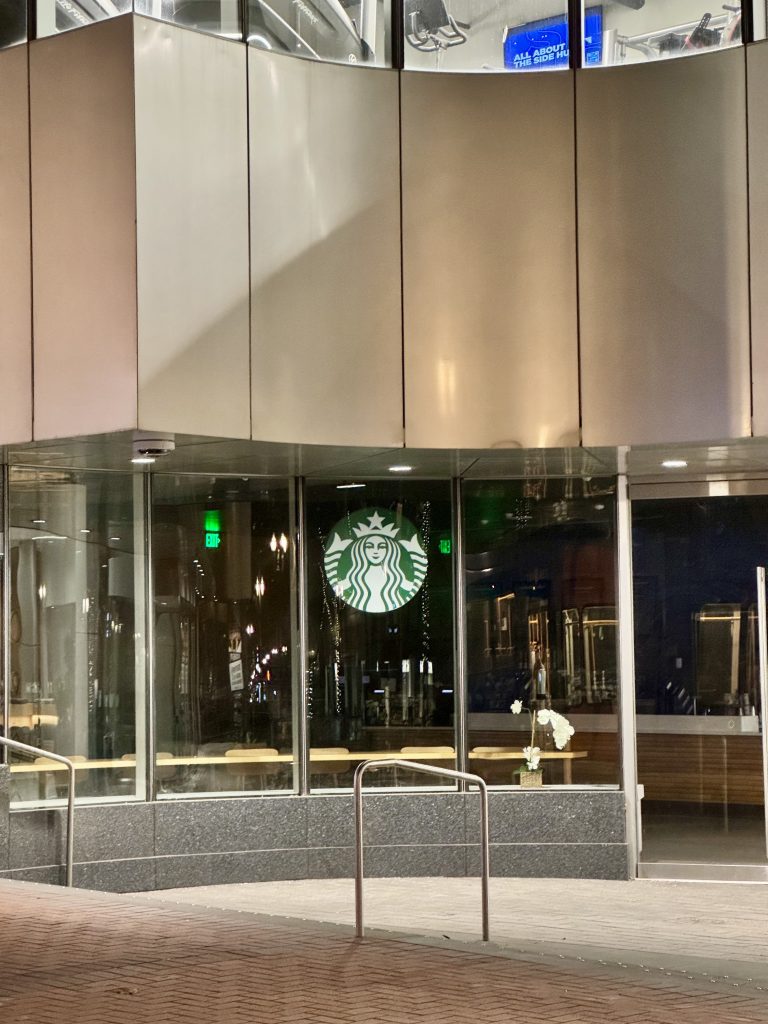
The strike was organized by Starbucks Workers United, the union representing store employees, and it came after months of frustrating contract talks. According to the union, Starbucks had promised to reach a deal before the end of the year – but never followed through. So, during one of the company’s most lucrative times of year, workers said “no contract, no coffee.”
“We were ready to bring the foundational framework home this year, but Starbucks wasn’t,” union president Lynne Fox said in a statement. “After all Starbucks has said about how they value partners throughout the system, we refused to accept zero immediate investment in baristas’ wages and no resolution of the hundreds of outstanding unfair labor practices.”
The strike wasn’t just about stalled negotiations. Starbucks had already faced accusations of union busting, with workers claiming the company shut down stores that voted to unionize. Starbucks denied the claims, saying the closures were due to things like lease issues, building problems, or safety concerns. According to The Seattle Times report, the National Labor Relations Board wasn’t convinced – in December, it filed a complaint demanding Starbucks reopen eight stores in Seattle that had been closed.
The holiday strike turned out to be one of the largest moves yet in the Baristas’ fight for a fair contract. And while customers may have missed their Peppermint Mochas, workers made it clear they were done waiting for corporate goodwill.
According to Wall Street Journal, the new CEO Brian Niccol earned nearly $96 million after just four months on the job, thanks to a massive pay package detailed in SEC filings. That included $90 million in stock, a $5 million signing bonus, and just over $61K in salary. Most of the payout came from stock tied to his former role at Chipotle.
Capitalism experiences periodic instability and crises due to its internal dynamics. Former CEO Laxman Narasimhan was ousted by the activist investor, Elliott Investment Management, that is there to push for changes that it thinks management is not doing quickly enough or not doing right.
In addition, Starbucks quietly ended its open-door policy, now requiring customers to make a purchase if they want to stay or use the restroom. The coffee giant rolled out a new code of conduct banning things like smoking, outside alcohol, drug use, and panhandling.
Under Niccol, the company said staff would be trained to enforce the rules – and law enforcement could be called if needed. The move marks a shift back to stricter store policies after years of trying to be more inclusive.
Repealing Measure 110 – Oregon’s law that decriminalized small drug possession – has had serious consequences for homeless communities. The policy was designed to shift drug use from a criminal issue to a public health one, connecting people to treatment instead of jail. Rolling it back has created more arrests, fewer treatment options, and a return to a cycle of incarceration that hits unhoused people the hardest. For many already struggling, it could push them further from stability – and deeper into the system. The fallout could reach beyond the streets – even into places like Starbucks.
Combine that with Starbucks’ new policy mandating purchases for restroom use, and you have a significant setback. Homeless individuals who once found a warm seat or safe restroom may now face both criminalization and locked doors – no coffee, no compassion. While I’m not advocating for public drug use, for many people experiencing homelessness, drug use can become a coping mechanism as a means to survive. When Starbucks introduced a new code of conduct discouraging loitering, it disproportionately affected homeless individuals, because of their appearance or behavior, and that they might be simply unwanted. The repeal of Measure 110 signals a shift towards criminalization and when it’s paired with corporate policies that exclude marginalized groups, it highlights an increasing social trend – to push homelessness out of sight – whether by law or through private properties.
‘To sanitize public spaces by removing individuals who don’t fit’ is a form of exclusion, disguised in the form of law and safety. For a company like Starbucks – whose mission is “to nurture the human spirit – one person, one cup, and one neighborhood at a time”, I’m left questioning – ‘does the human spirit have to smell like a Pumpkin Spice Latte?’

